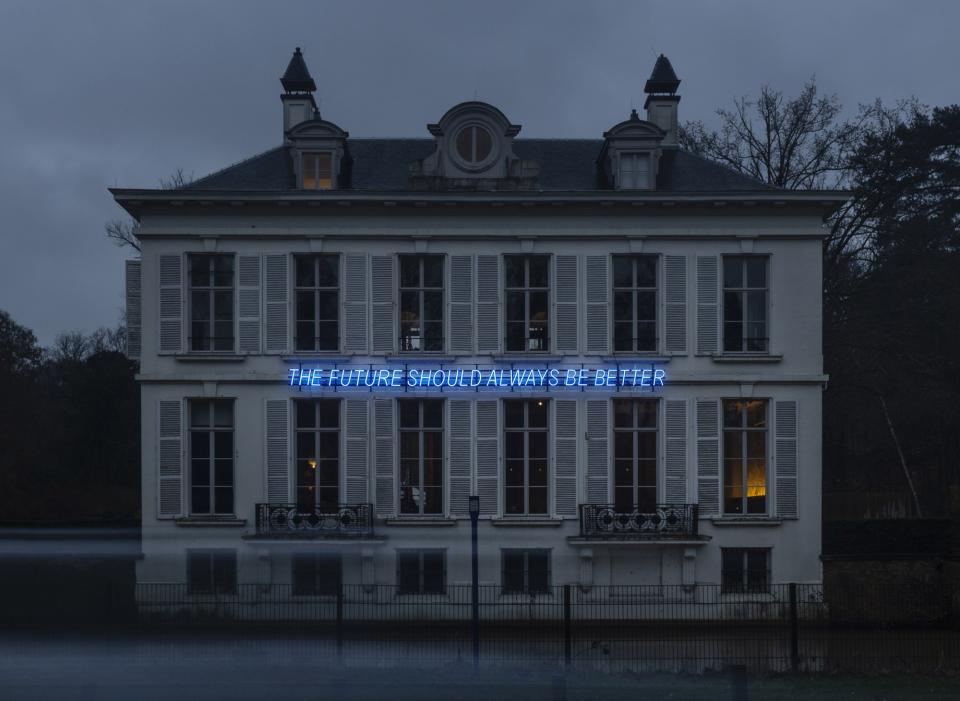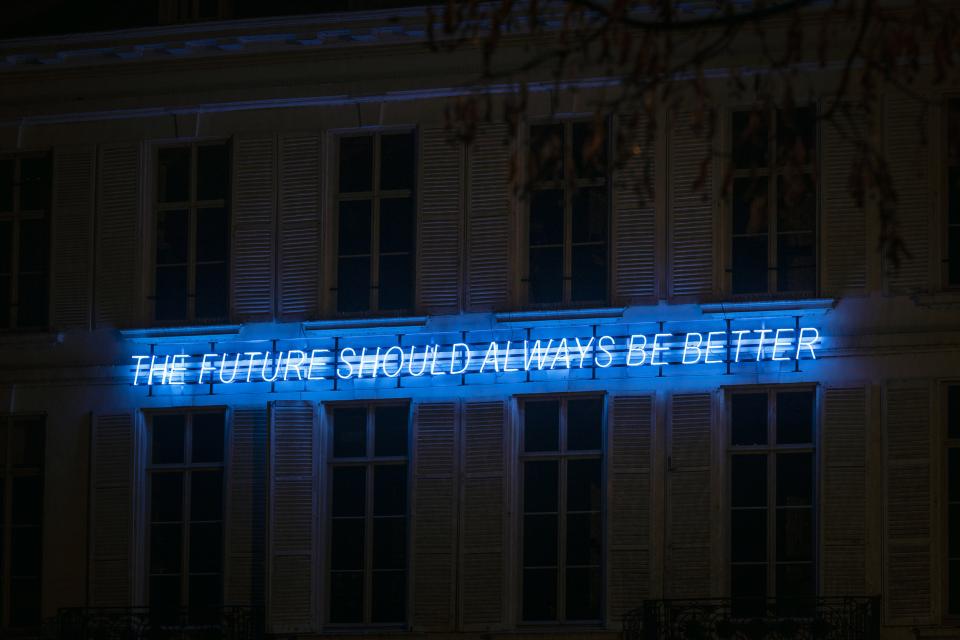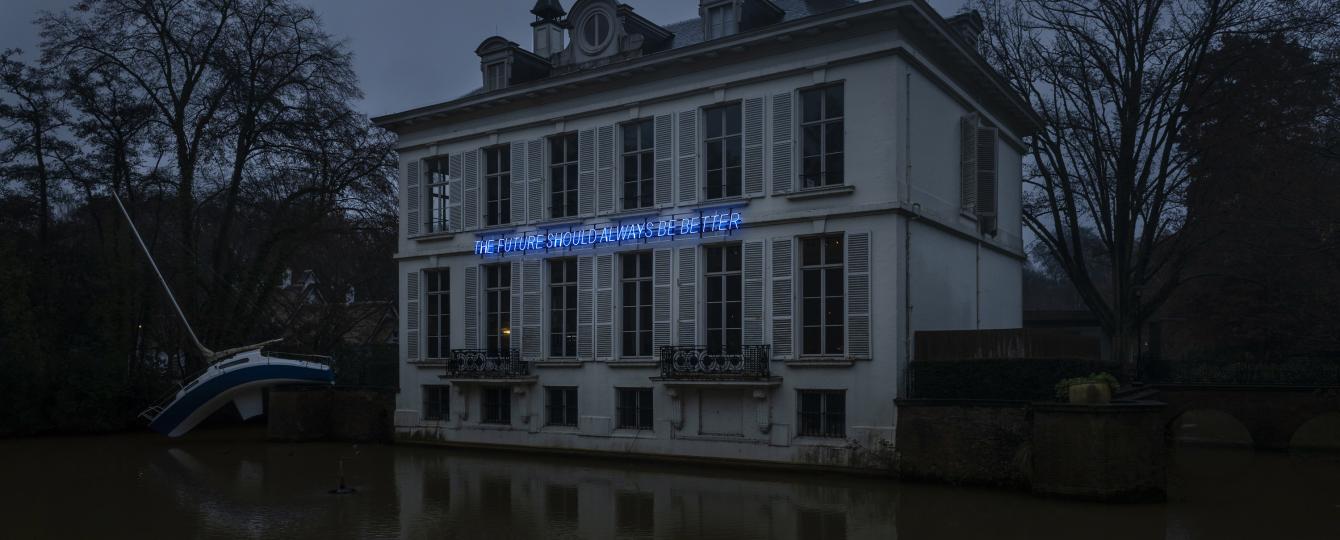The Future Should Always Be Better
This text-based artwork will be on display from 1 December 2021 until 30 March 2022 on the façade of the historic Middelheim ‘castle’. Today this building forms the core of the Middelheim Museum with an information point, museum shop and museum café. As the heart of the institution, it also faces the nearby street, making the work visible to visitors and passers-by alike at all times.
The illuminated statement that comprises the work, “The Future Should Always Be Better,” can be read as either a prophecy, a wish, a call to action, or perhaps all these at once. But who is to say what is ‘better’?
The sentence reflects an ambivalence that the artist identifies as a sign of the times. At a moment of unprecedented advancements in human technology and knowledge, global catastrophes remain unresolved points of contention. Lockhart’s message is phrased such that it is open for interpretation — how do we understand what ‘should’ be, and who is to define ‘better’? What will the future look like, and what feelings does its inevitability evoke?

Photo: Ans Brys
Hope
For an art institution like the Middelheim Museum, founded in 1950, thinking about the future is both exciting and challenging. How is one to steer this ‘grande dame’ towards the future? How can the collections be meaningful for future generations? How is one to shape an image of the future together with artists and audiences? How is one to truly be an outdoor museum — an open, freely accessible space that can welcome all inhabitants of and visitors to a city like Antwerp? Sharon Lockhart invites us to collectively consider these future-oriented questions and others as society continues to develop and evolve. In doing so, we stand to view the future’s endless : ‘And perhaps it is awareness of the common future that can give each individual the strength to live through this shifting present which we call the future’ (Marc Augé, The Future, 2015).
The exhibition in Antwerp is the second venue for The Future Should Always Be Better. Initially conceived for the façade of the Kestner Gesellschaft in Hannover, Germany, the work was commissioned by the institution’s director Adam Budak as a means of engaging with the gallery’s public during its lockdown-related closure in early 2021. With its presentation in Belgium, the Middelheim Museum and the artist continue to share a message of radical hope for our collective fate.
Sharon Lockhart (2021)
"The inevitability of the future has a certain relentlessness. During much of the twentieth century, humanity considered the future as a hopeful place where obstacles were overcome and inequities erased, where technology and social will would solve the great problems. As we enter the twenty-first century, much of that optimism seems naive. We are faced with the very real possibility that the future holds no place for humanity. In this world, merely holding up the idea of a common future is a life-affirming act of strength. This piece is both a proposition and a question. How will we engage the coming times and what will they hold for us?"
Sharon Lockhart
Sharon Lockhart (born 1964) is an US-American artist living and working in Los Angeles. In a diverse practice that includes installation, photography, film, painting and sculpture, Lockhart creates compelling and complex interactions between the various media and forms she employs, histories she encounters, and the communities and people she collaborates with. In 2017, Lockhart represented Poland at the 57th Venice Biennale with her multidisciplinary project, Little Review. Solo exhibitions include: Los Angeles County Museum of Art; Thyssen-Bornemisza Art Contemporary, Vienna; The Jewish Museum, New York; and Kunstmuseum Luzern, Switzerland amongst others.

Photo: Ans Brys
This project was realized with the kind support of neugerriemschneider (Berlin) and the Kestner Gesellschaft (Hannover). Curator: Pieter Boons. Thanks to Adam Budak, Robert Knoke, Dylan Lustrin, Burkhard Riemschneider & Sharon Lockhart. Courtesy of the artist, neugerriemschneider, Berlin and Gladstone Gallery.


